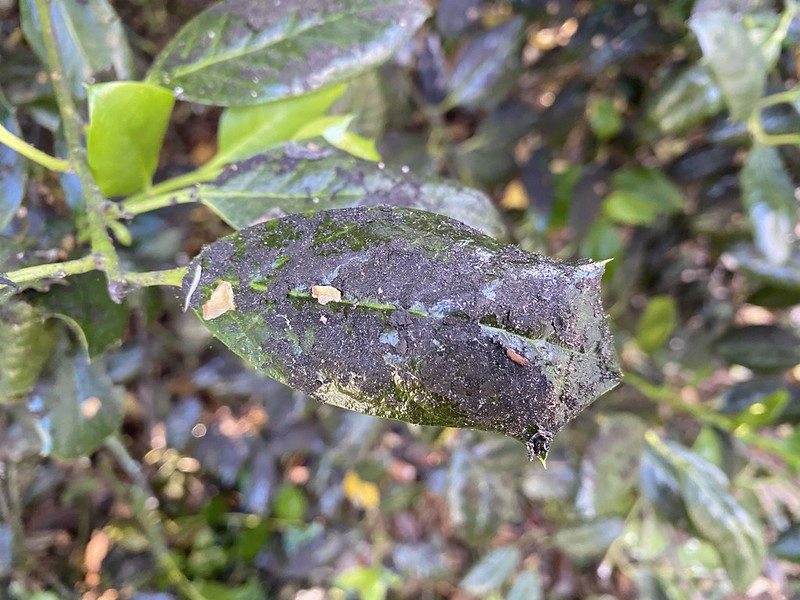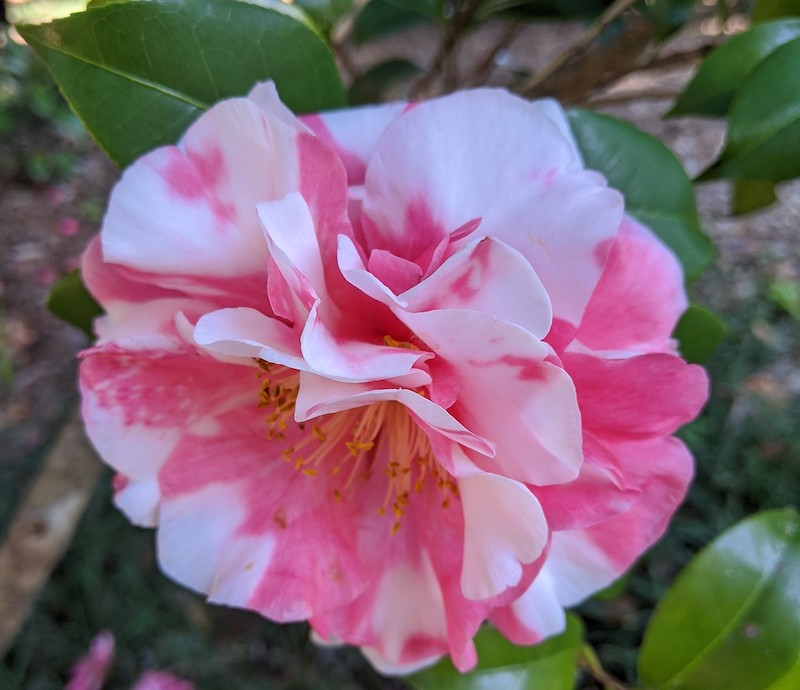Camellias are some of the best shrubs for displaying long-lasting color. If carefully chosen for bloom time, a gardener could have Camellia blooms on display for six or more months of the year. Although these broadleaf evergreen shrubs are fairly maintenance-free, a few diseases can infect Camellias growing in all of the USDA growing zones. Most of the diseases do not seriously affect the long-term health of Camellias, although quick diagnosis and treatment for any disease ensures that your Camellias will recover fully.
Camellia Petal and Flower Blight
Petal and Flower Blight is a fungus that affects the flower buds of Camellias and is most evident early in the spring during periods of wet weather. The fungal spores are carried on the wind and settle in the buds of susceptible Camellia varieties. Planting varieties and cultivars that bloom either in the winter or later in the spring and early summer should avoid this disease.
Identifying Camellia Petal and Flower Blight
The buds and open flowers will display patches of dull brown. The fungus gets inside the flower buds and causes mostly cosmetic damage by turning petals brown and distorting the whole flower.

Photo by Matt Borden, unmodified, Flickr, Copyright CC By-SA 2.0
Treating Camellia Petal and Flower Blight
Picking off affected flowers as they bloom will neaten the overall appearance of your Camellia. There is no treatment for this fungus. Avoid varieties that bloom in the early spring when this fungus is most likely to be active.
Camellia Dieback
Camellia Dieback disease can be difficult to treat. The fungus enters the Camellia at any point where it has been damaged. Poor pruning, lawnmower injury, or badly grafted rootstock can provide an entry point. The fungus is opportunistic and most active early in the spring as the Camellias and other broadleaf evergreen shrubs shed some of their leaves. Dieback fungus left untreated will result in certain death of the plant.
Identifying Camellia Dieback
Camellia Dieback causes a decline in the growth of foliage and flowers. It also can cause gall growths near the base of the plant.
Treating Camellia Dieback
Remove infected growth, cutting it back to healthy tissue. Good garden hygiene is a must. All leaves that fall in late winter as part of the annual leaf drop should be raked up and disposed of in the trash or burned. Remove any mulch from the base of the shrub that may be infected with spores. Do not overwater affected shrubs and ensure that the soil drains well year-round. Prune out excessive growth to improve air circulation around the Camellia.
Leaf Gall
Although Leaf Gall causes severe distortion of Camellia leaves and looks unsightly, it is both innocuous and easy to treat. The fungus affects new growth in the early spring and continues to grow throughout the season until conditions are right for spores to travel to other plants by the wind or through overhead watering and rain.
Identifying Leaf Gall
New shoots and leaves may become extremely fleshy and turn a creamy white or greenish color. As the galls mature, the upper layer of the leaf is exposed and the white spores are released. Gall-infected leaves may also turn a reddish color and become deformed.
Treating Leaf Gall
There are no sprays or powders to protect Camellias from Leaf Gall. The only protection is to remove and dispose of affected leaves as soon as possible. Ideally, remove the leaf before the spores have been released. The spread of the disease can also be slowed by using drip irrigation or soaker hoses exclusively around Camellia shrubs. Overhead watering can splash the leaves and soil, spreading any spores present.
Sooty Mold
Sooty Mold is a secondary infection that results from an infestation by sap-sucking insects. The sap-suckers (aphids, whiteflies, scale, etc.) exude a sticky liquid called honeydew as they feed on the soft tissues of plants. The honeydew is full of sugars that attract other pests such as ants and Sooty or Black Mold spores. Heavy outbreaks of Sooty Mold can cover the entire surface of leaves, severely restricting the ability of the plant to photosynthesize. The appearance of Sooty Mold is the final warning that your Camellia is not healthy and treatment is needed.
Identifying Sooty Mold
Sooty Mold appears as black or dark gray moldy growth on leaves and branches where honeydew from sap-sucking insects has collected. The mold does not cause direct damage to the foliage other than restricting the photosynthesizing abilities of the plant.

Photo by Michele Dorsey Walfred, Unmodified, Flickr, Copyright CC by 2.0
Treating Sooty Mold
Treat for the original pest invader, such as Camellia scale, aphids, and whitefly. Wash the Sooty Mold off with a strong jet of water early in the day so the foliage has plenty of time to dry. Hand wiping of leaves is also an option if the area affected is not large.
Viruses
Viruses in Camellia shrubs are generally a result of propagation and are not often introduced by a pest. The most common virus is called Yellow Mottle or Leaf Yellowing Virus. This virus gives the normally solid-colored leaf a variegated appearance. Other viruses may affect the coloring of flower buds, giving blooms a striped or blotched pattern. Often, viruses do not harm the health of the Camellia. Camellia breeders may even propagate affected shrubs to enhance a specific trait caused by a virus.
Identifying Viruses
Viruses often only affect a portion of the shrub, leaving the majority of the plant looking normal. Affected branches may display foliage with odd yellow markings, spots on the foliage, or faded coloring. Flowers may have more than one color or different stripes or blotches from the rest of the shrub.

Photo by Scot Nelson
Treating Viruses
Viruses cannot be treated by chemical sprays or other treatments. To help the Camellia revert to a normal appearance, carefully prune out the affected branches. Do not plant shrubs that have obvious signs of virus infection in the garden. Take cuttings for propagation only from healthy plant tissue. Sanitize all pruning and propagation tools between uses to prevent transmission of any viruses.
Camellia Disease Chart
|
Disease |
Identifying |
Treating |
|
Camellia Petal and Flower Blight |
Brown splotches on flower petals, deformed buds |
Pick off affected buds, plant varieties that bloom earlier or later in the season |
|
Camellia Dieback |
Dropping of leaves or flowers, decline in overall growth vigor |
Prune out affected branches, avoid overwatering and sites with poor drainage |
|
Leaf Gall |
Swollen areas at the base of the leaves, patches of white spores |
Remove all affected leaves |
|
Sooty Mold |
Black or gray mold wherever honeydew has collected on the plant |
Treat for the original pest, wash off the mold with water |
|
Camellia Viruses |
Changes in leaf or flower coloration |
Prune out undesired changes, sterilize propagation tools between uses |
Sources:
"Camellia Diseases and Insect Pests." Clemson University Cooperative Extension Service. hgic.clemson.edu
"Camellia Pests and Problems." University of Florida / IFAS. gardeningsolutions.ifas.ufl.edu
 |
Author Robbin Small - Published 7-31-2023 |
